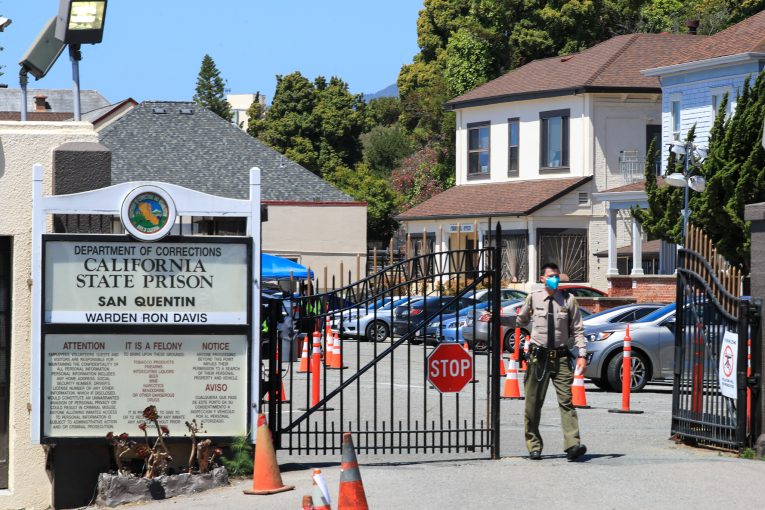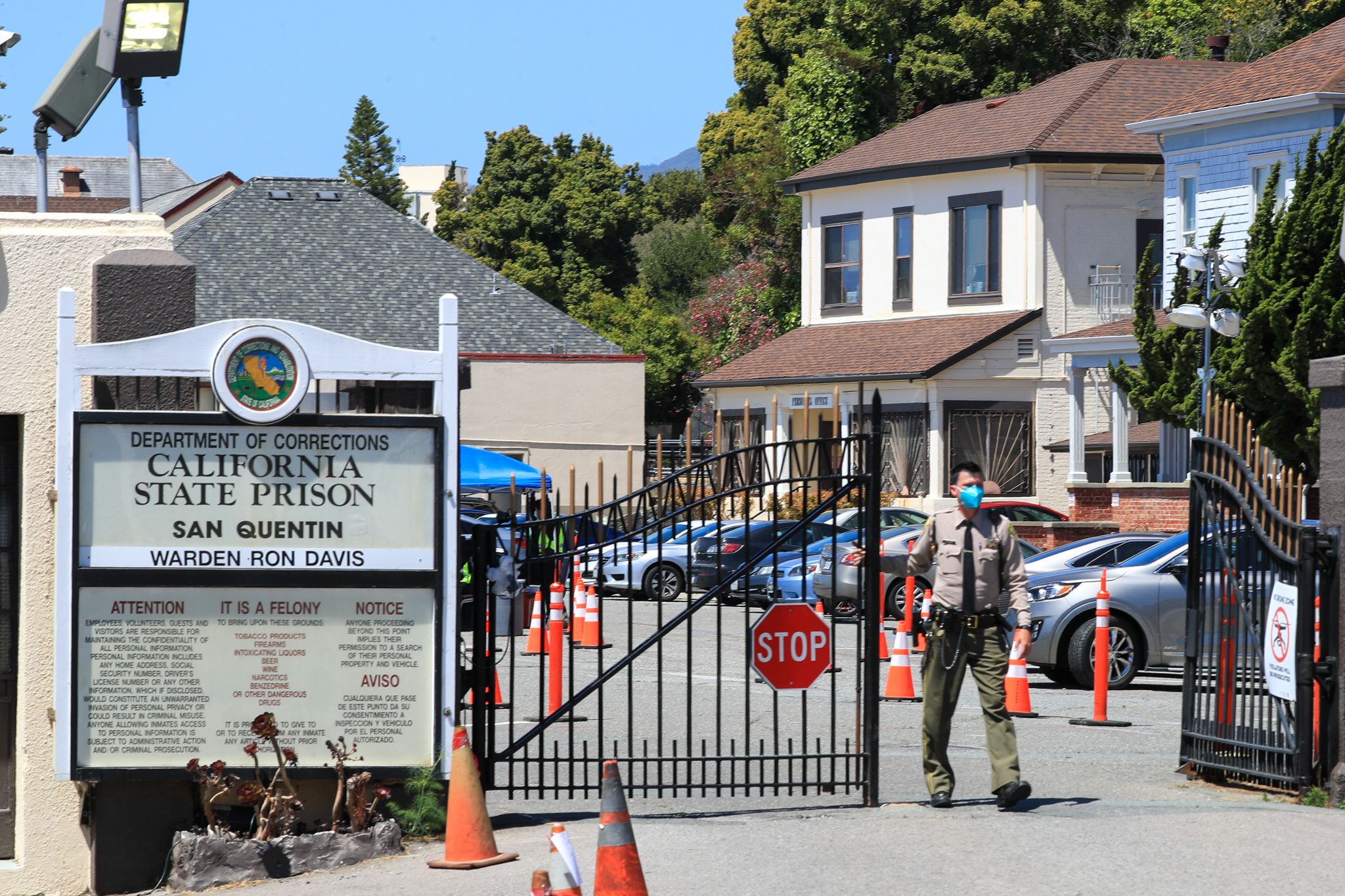

How governors respond to this pandemic will define their legacy. They all face a choice: save lives in prisons now, or hand down potential death sentences with their inaction and watch harm ripple through communities and exacerbate inequities into future generations.
By Chesa Boudin and Miriam Krinsky
As the Trump Administration abdicated its role in leading the fight against coronavirus, governors have emerged as critical players and sometimes media darlings — coordinating the provision of supplies, overseeing the closing and reopening of economies, and calibrating the response to the pandemic. But they have utterly failed to protect their constituents in what have emerged as the largest coronavirus hotspots — state prisons. Indeed, over half of the 84,000 coronavirus infections and 703 deaths among people incarcerated and working in local, state and federal correctional and detention facilities in the United States are in state prisons.
At a time when dense living conditions and overpopulated facilities are a ticking time bomb for spread of the virus, prisons across the U.S. have decreased their population by only 5 percent since the pandemic’s onset. Meanwhile, jails have achieved on average a 30 percent reduction in population, with some jurisdictions cutting detention rates in half or even more. That progress is attributable to many local elected prosecutors who acted swiftly with others to reduce the number of people entering jails and release as many individuals as possible. But these local leaders have limited power to impact prisons — prompting 35 district attorneys from around the country to issue an open letter and video to governors urging action. As they write, “Being confined in a prison or jail should not be a death sentence. Yet, in the context of COVID-19 that is exactly what it has become for far too many.”
jails and release as many individuals as possible. But these local leaders have limited power to impact prisons — prompting 35 district attorneys from around the country to issue an open letter and video to governors urging action. As they write, “Being confined in a prison or jail should not be a death sentence. Yet, in the context of COVID-19 that is exactly what it has become for far too many.”
The failure of governors has been universal. A recent report from the ACLU and Prison Policy Institute found gross negligence in every state, although some states have exhibited particularly egregious responses. In Michigan — where as of mid-July there have been 68 deaths and nearly 4,000 positive tests of people in state prisons — Gov. Whitmer has declined to support a ballot measure that would allow for early release of individuals incarcerated in state prisons who can be safely returned to the community. In California, Gov. Newsom recently ordered the release of 8,000 individuals, but that represents under 8 percent of an already overcrowded state prison population and a far larger number — nearly 50 percent of the population — has being classified by California Department of Corrections and Rehabilitation’s own data as “low risk.” Moreover, this action comes too late to prevent the explosive and deadly outbreak at the overcrowded San Quentin prison and to save the lives of over 30 people behind bars who have died from COVID-19.
A Message from DAs to Governors: Save Lives in Prisons Now from Fair and Just Prosecution on Vimeo.
Citing public safety concerns, governors have been wary to release individuals — however that fearfulness is rebutted by evidence confirming both that many individuals can safely return home and that failing to act will result in catastrophic outbreaks in prisons with profound public health consequences for the entire community. Experts agree that there are countless individuals behind bars who can safely be released — either because they never posed a serious public safety threat or because they’ve grown and changed. The U.S. is an international outlier in incarceration and sentencing; much of the rest of the world understands that even when an individual commits serious harm, typically as a young person, that doesn’t mean that they should die in prison.
Governors can and must take immediate action, and the open letter released today calls on them to do so. They can dramatically decrease the prison population by ordering the release of elderly individuals, those with six months or less on their sentence, and those who are otherwise medically vulnerable to severe illness from COVID-19, assuming they do not pose a serious risk to the physical safety of others. They can accelerate release for individuals already found suitable for parole, suspend revocations, and terminate parole for people under supervision who have had no new criminal behavior within the last year. And finally, for those who remain incarcerated, governors should suspend co-pays for medical visits, ensure the provision of adequate medical care, provide free and ready access to phone calls with family and legal counsel, and mandate that facilities maintain cleanliness and hygiene, including by providing free soap, masks, and cleaning supplies.
It is now well-established that infections in prisons endanger the entire community. Nine of the ten biggest hot spots in the United States are jails or prisons. Prisons become wells of infection, incubating and accelerating outbreaks in the surrounding area. The failure of governors to act has already had profound public health consequences, but absent action the damage to communities will continue to escalate, while also fanning the flames of racial inequality.
The brunt of the pandemic has been borne by Black and Brown communities. Abandoning the men and women who are currently behind bars — disproportionately people of color due to mass incarceration — will only amplify existing racial health disparities. The vast majority of people in prisons will come home again, if they survive this pandemic. But they will return home, often to already medically underserved communities, with potentially life-long health complications and disabilities stemming from their infection, thereby amplifying existing inequities.
How governors respond to this pandemic will define their legacy. They all face a choice: save lives in prisons now, or hand down potential death sentences with their inaction and watch harm ripple through communities and exacerbate inequities into future generations. The answer seems clear. Let’s hope our nation’s governors agree.
Chesa Boudin is the district attorney for San Francisco, California. Miriam Aroni Krinsky is a former federal prosecutor and executive director of Fair and Just Prosecution.
To sign up for our new newsletter – Everyday Injustice – https://tinyurl.com/yyultcf9






Do you really have to “ask” why they don’t do more? I think most folks know why. Fear of causing an increase in crime, and spread of Covid beyond prison walls.
Plus, a general lack of concern regarding those who have committed crimes. Sometimes coming from prisoners, themselves (depending upon the “type” of crime committed).
They are arguing that a lot of people can be released safely – in part because they have long since aged out of crime and in part because a fairly high percentage will be released within a year or so anyway.
Probably (largely) true, except for the spread of Covid (beyond prison walls).
Every time I see one of these articles (regarding the “count” in prison, and how that would impact the public if they’re released – e.g., before there’s a vaccine).
Regardless, there’s the question of “punishment”, regarding early release. (To which I’m not stating an opinion. But, a lot of people probably would.)
Most of the experts believe that the opposite is true – releasing people will stem the spread and holding them in there will increase it.
In terms of the issue of punishment, I would argue many have been over punished. Besides it is not like these are normal times.
I’m not putting forth my own opinions regarding this general issue. I’m addressing “why” the issue hasn’t been addressed by governors.
Remember Willie Horton, and how that incident was used?
Regarding “experts” claiming that the opposite is true (regarding the spread of Covid), are they referring to spread within prisons, or outside prisons? (Big difference, regarding how society would view that.)
In any case, I doubt that publishing the high number of infected prisoners is going to “help” the cause to free them early – regardless of what the experts say. (Also – politics is often involved, regarding “experts”.) The fact that these aren’t “normal” times works against early release, in general.
Except for those limited few who advocate on behalf of prisoners, regardless.
The ability to reduce county jail populations is completely separate from the ability of state prisons to do the same because people in county jails are either serving sentences under a year already or are awaiting trial and therefore are still considered innocent and their confinement is not mandatory.
CDCR is currently releasing inmates with under a year remaining if non-violent or if they have certain medical conditions. All inmates also got a 3 month credit, including violent offenders. CDCR has a responsibility to keep the public safe from harm so it would be irresponsible and against their core mission to blindly release career criminals who have resisted programming and any efforts of rehabilitation into our cities. It is a double edged sword, when an inmate gets released that ends up having Covid-19 there is a local uproar with the prison at fault for releasing the virus (this is how that inmate is identified, they are not seen as a person in this instance by citizens) into their communities, yet when the virus is kept behind the walls there is an uproar with the prison at fault for its spread among the prison population and deemed to be inhumane and violating their rights because “inmates are people too”. It seems they are only people when they are not a threat to the community they are released to.
The infection rate at CIM caused massive protests and demands to create more distance among inmates so they transferred inmates after they tested negative for the virus. Some asymptomatic inmates ended up testing positive after transferring creating the massive spread currently happening at SQ. CDCR is going to great lengths to keep the spread minimal while also trying to avoid isolating inmates and causing more harm to their mental health or violating their remaining civil rights. Inmates already cannot have in person visits, phone calls are restricted where Covid cases are rising, and mail from USPS is heavily delayed due to shortages from thousands of postal staff infected with Covid-19 nationwide.
So what response from the Governor is the right one? The pandemic is affecting us all, outside and inside the walls and blaming prison staff for going to work sick and spreading the virus to inmates is nonsensical because we are tested weekly and all cases that are positive have been asymptomatic and our jobs are essential. There is no simple solution during this crisis and people who don’t have a solution that will address all sides of the problem shouldn’t criticize the efforts being made. Do we all just stop going to work and let the inmates take over operating the prisons themselves? Will everybody sleep better at night?
Melissa
“There is no simple solution during this crisis and people who don’t have a solution that will address all sides of the problem shouldn’t criticize the efforts being made.”
While I agree there is no simple solution and many of your points are valid, I disagree that no criticism of the current course should be made. I often found in my career, when I didn’t have a good solution, the best choice was frequently brought forward, at least in part, by someone looking at the problem through fresh eyes. It helps if the criticism is viewed as an observation and identification of problems instead of a personal attack. It would also of course help if criticisms were expressed that way